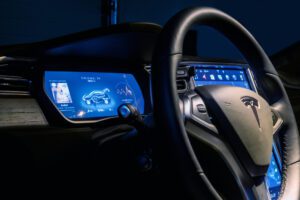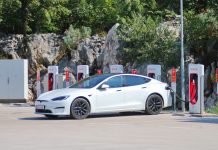Automotive technology is always changing rapidly to adapt to new inventions that will make driving easier and more enjoyable. From electric vehicles to bluetooth and lane assist capabilities, the auto industry is constantly evolving to meet consumer demands. Even though our roads are not full of self-driving cars yet, the following designs are being created and making drivers’ vehicles more interesting.
- Bulletproof Vehicles
When most auto consumers think of safety features, they think of things like reliable brakes and airbags, but a heightening trend is actually bulletproof vehicles. Phil LeBeau of CNBC reported that around 2010, around 4,000 armored cars were purchased worldwide, but that number became closer to 18,000 in 2018. Hannah Elliott of Bloomberg noted that there are currently somewhere between 200,000 to 300,000 armored vehicles worldwide.
Bulletproof vehicles are heavily armored and protect against many of the worst kinds of violence. Elliott reported that the 2020 Land Rover Sentinel “contains more than a ton of ballistic steel plate and armored glass inside its body” and can withstand pipe bombs and gunshots. Other manufacturers are also getting into the bulletproof car industry, including Lincoln, which is coming out with a version of its sedan that has bulletproof glass and “run-flat” tires that will keep the car moving if the tires are shot.
According to Forbes, other features of armored vehicles include bomb blankets to absorb shocks, road tacks that can damage the tires of vehicles behind them, external microphones, smoke screens, electric shock handles, and weapons.
It makes sense that diplomats, celebrities, and leaders of countries are invested in extra protection, but Ford spokesman Rick Body stated it could also be “a soccer mom that perceives risk” or anyone who lives in a dangerous area. LeBeau noted that many people who work in dangerous parts of Central America and South America purchase these vehicles for reliable protection. 
If you have some extra cash and want a bulletproof vehicle, you can find one for around $140,000.
- Virtual Personal Assistance
Have you ever been on a road trip and needed a gas station or hotel suggestion quickly, or perhaps needed to know how far in advance you needed to leave for an important meeting? A virtual personal assistance (VPA) system is powered by Artificial Intelligence (AI) and allows drivers and passengers to instruct vehicles to provide information and complete tasks. Instead of scrolling through an infoscreen and needing to look at it, VPA uses speech-to-command technology that lessens distracted driving and promotes safety.
Karen Piurowski of HARMAN noted that VPAs “help drivers with vehicle-centric tasks and to respond to events in the car, from the cloud and from the outside environment.” A smartphone cannot automatically send a notification in case of an emergency such as a weather or traffic incident, but a vehicle’s VPA can sense an issue and has the capability to send a request for help if necessary.
VPAs can also make other things more convenient, such as providing assistance that could normally be found in the user manual or scheduling service at a dealership.
- Energy-Storing Body Panels
Dreaded battery issues have been a problem for decades, as they aren’t durable, take up a lot of space, and despite upgrades in the technology of batteries, they still add a lot to the weight of vehicles. To eliminate potential battery issues, manufacturers such as Volvo are testing out energy-storing body panels.
According to Canada’s Automotive Training Centres, the energy-storing body panels are “composed of a sleek carbon fibre which houses nano-batteries and super capacitors – essentially super teeny-tiny batteries.” The panels could theoretically be charged by various means, including regenerative braking, plugging them into an outlet and later transferring the energy to cars or, as Toyota has experimented with, installing the panels on the roofs of cars and using solar power to recharge them.
Ultimately, the goal of energy-storing body panels is to reduce the weight of cars by around 15% while also promoting electric vehicle (EV) and hybrid technologies that are more eco-friendly than typical fuel-powered vehicles.
- Augmented Reality Dashboards
Perhaps one of the most intriguing up-and-coming technologies in the auto industry is augmented reality dashboards (ARDs). Many vehicles now come equipped with GPS technology, but these dashboards would take current technology to a totally new level. Commonly mistaken for virtual reality (VR) technology, Brian Cooley of CNET outlined that an ARD is “essentially a layer of data over reality” and “typically adds to what you see but can also subtract, getting things out of the way.”
Cooley noted that one of the most useful features of ARDs would be assistance with maps because although GPS technology is great, many people still don’t understand how to read maps so ARDs would be able to “deliver navigation that requires zero comprehension of distances, angles or north orientation.”
If you travel with a trailer hitched behind your vehicle, GMC’s 2020 trucks will also deliver a very useful ARD feature, allowing the capability for drivers to make their trailers “transparent” so they can see what is behind them. BMW, Audi, and Jaguar are three other manufacturers who are experimenting with ARDs to make driving easier and more enjoyable.
Right now, we can only imagine how much more convenient driving will be in the future, but the technologies above are just a few examples of promising upgrades that may create a better experience on the road.








